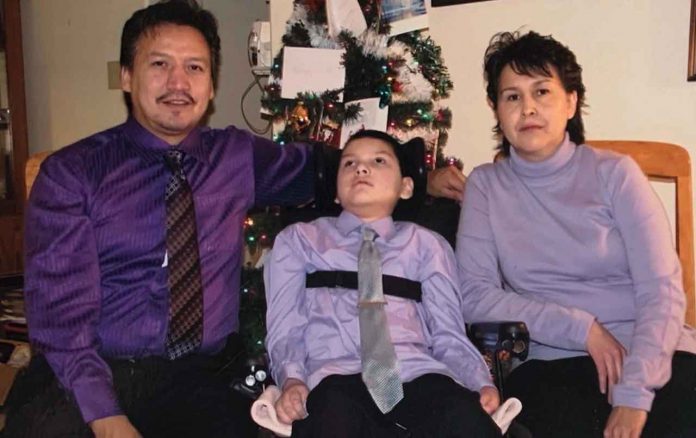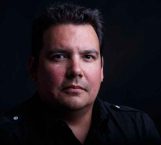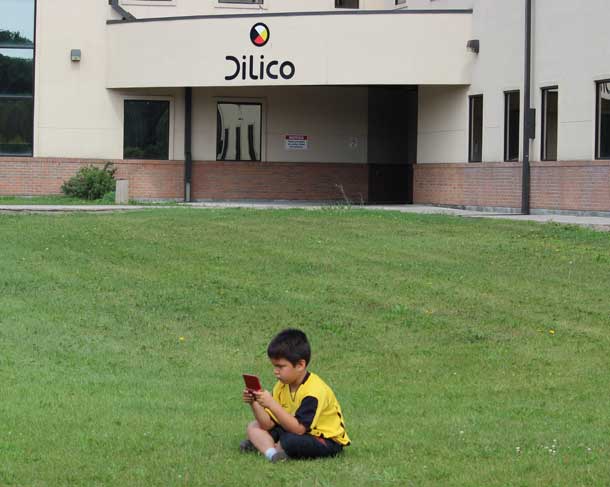
Family wants Canada to know government is still not abiding by the Jordan’s Principle tribunal ruling
Of all the pain, watching his children suffering was the worst.
“I had to fight with bureaucrats just to get the simplest things,” Zach Trout says. “I lost days I should have spent with Sanaye and Jacob. I can’t express how painful that was.”

Sanaye’s battle with Batten disease sparked a 13-year fight with federal authorities for basic health services.
Zach and his wife, Veronica, live with their four children on Cross Lake First Nation in northern Manitoba.
Their other two children, Sanaye (born in 1998) and Jacob (born in 2002), died from complications due to Batten disease, a rare and fatal neurological disorder that causes vision loss, seizures, and the loss of cognitive functions.
Both were diagnosed as babies, and died before their 10th birthday.
Both grappled with the relentless sickness alongside loving parents who gave up jobs, livelihoods, time and money fighting to ease their pain.
Perhaps worst of all, both endured chronic negligence, neglect, and racism by Canadian and Manitoban health authorities that led to increased suffering and anguish — and, almost undoubtedly, earlier deaths than expected.
“I would not wish for any family to go through this,” Trout says. “And how unnecessary it was.”
The family’s extra suffering came from a long-standing “gap” in health services for First Nations.
For Manitobans, health care comes from a one-stop, insured benefit plan provided by the province — something all Canadians enjoy.
For First Nations, health care is a responsibility Canada must provide under treaty and the Indian Act. Since the feds usually don’t run hospitals, provinces provide health services to First Nations and bill the First Nations and Inuit Health Branch of Health Canada. The provinces then have to wait for approval for a procedure or service, resulting in First Nations citizens waiting days — sometimes years — for adequate health care.
Problems also emerge when the feds and provinces can’t agree on what care a First Nations person is entitled to. Federal officials often only approve cheaper treatments and drugs than those recommended by physicians.
On top of this, some doctors, optometrists, and therapists simply refuse to file the paperwork and wait for government to pay, forcing First Nations to pay for up-front and apply for reimbursement later.
This adds up to Indigenous people dying while waiting for basic, decent health care. Perhaps best known is Jordan River Anderson from Norway House Cree Nation, who died in a Manitoba hospital waiting for government officials to decide who would pay for care.
In 2007, a complaint was filed to the Canadian Human Rights Tribunal by Gitsxan activist and child-welfare advocate Cindy Blackstock, her non-profit First Nations Child and Family Caring Society, and the Assembly of First Nations, demanding First Nations children immediate health care on par with any child in Canada.
While Canada adopted “Jordan’s Principle” in 2007, the federal government delayed the complaint for years on technicalities. Meanwhile, First Nations children continued to experience systemic discrimination, leading to demands for compensation.
In 2016, the tribunal found Canada guilty, ordered it to “cease it’s discriminatory conduct” and compensate those impacted.
Canada has been fighting the decision ever since; in court, in media, and even during the last federal election.
On Sept. 6, 2019, the tribunal ruled again the federal government “was wilful and reckless” in discriminating against First Nations children living on reserves by systematically and knowingly underfunding child-welfare services. It ordered Canada to pay $40,000 to each impacted First Nations child and parent since 2006 who experienced removal or a lack of medical services.
The Canadian government continues to fight the decision, even during the COVID-19 pandemic. On April 16, the tribunal published a ruling refusing Canada’s request to exclude deceased children such as Sanaye and Jacob.
No amount of money though can bring back the 13 years the Trout family fought for adequate health care for their children.
After fighting to have them diagnosed at the nursing station in Cross Lake, they travelled two weeks a month — often by medevac flight — to the Children’s Hospital of Winnipeg. While they received adequate treatment while in hospital, the moment they left to come home they had to fight for basic needs such as feeding tubes, diapers, and formula.
In Sanaye’s case, nurses gave the family just six syringes to use each month, though the little girl needed four shots a day. This meant the family had to reuse them, causing infections and more seizures.
In Jacob’s case, federal officials refused for more than a year to provide an inclined bed, leading the little boy to sleep problems and more seizures.
“Health workers would come once, and we wouldn’t see them for months,” Trout says. “We gave up our jobs and spent thousands flying to and staying in hotels to Winnipeg.”
What he wants now is simple: “I want compassion, and for governments to realize what is happening — and still happening — to First Nations children.”
 Niigaan Sinclair
Niigaan Sinclair
Originally appeared in the Winnipeg Free Press in May 2020. Republished with the permission of the author.
The views, opinions, and positions expressed by all columnists and contributors are the author’s alone. They do not inherently or expressly reflect the views, opinions and/or positions of NetNewsLedger.





